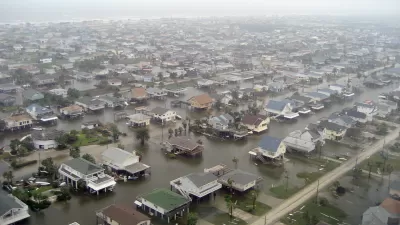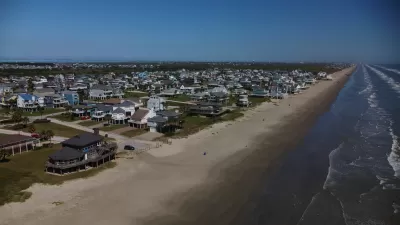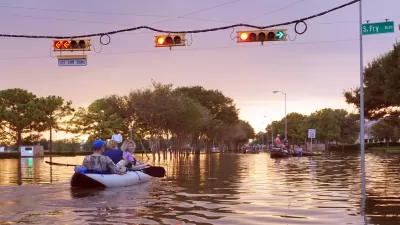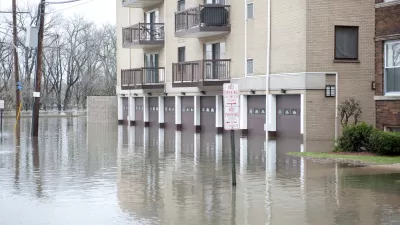Federal legislation and rising sea levels are changing the way homes are insured against flooding. According to this feature article, in fact, flood insurance "is serving as a kind of advance scout into a more difficult future."

Brooke Jarvis writes an in-depth feature article that examines the changing flood insurance industry. The central trope of the article—that flooding risk has already become flooding certainty in some parts of the country—is exemplified by the Hampton Roads Area of Virginia, where the sea level is rising as the land sinks, raising relative sea levels faster than anywhere else on the Atlantic Coast. Jarvis explains of the planning relevance of this story in the city of Norfolk:
The operative measurement for rising waters in Norfolk is not inches but feet — as many as six of them by the end of the century, according to the Army Corps of Engineers, though estimates vary. City planners are forthright that they’re preparing for a future in which parts of the city do not survive.
The extreme risks facing coastal communities are visible in the insurance industry, which is changing quickly in response to the more frequent floods brought about by rising sea levels and more extreme weather events, but also federal legislation known as. Biggert-Waters and Grimm-Waters, passed in 2012 and 2014, respectively. "The first law cut subsidies and phased out grandfathered rates so that premiums would start to reflect the true risk that properties…face — reaching what the N.F.I.P. calls 'actuarial soundness.' The second tried to slow the rate of those increases when it became clear how hard they would hit property owners," writes Jarvis.
The long-read article is the second in a series from the New York Times Magazine's climate issue. The article includes a lot more detail about the insurance industry, the land use implications of sea level rise, and the effect of federal legislation on how homeowners are addressing the challenges of climate change. Consider this article mandatory reading for planners, homeowners, and residents living in coastal areas.
For more coverage of insurance in a world of certain flooding, see a feature article about a Urban Land Institute report from 2013 and an article by ARUP from March 2017.
FULL STORY: When Rising Seas Transform Risk Into Certainty

Alabama: Trump Terminates Settlements for Black Communities Harmed By Raw Sewage
Trump deemed the landmark civil rights agreement “illegal DEI and environmental justice policy.”

Study: Maui’s Plan to Convert Vacation Rentals to Long-Term Housing Could Cause Nearly $1 Billion Economic Loss
The plan would reduce visitor accommodation by 25% resulting in 1,900 jobs lost.

Why Should We Subsidize Public Transportation?
Many public transit agencies face financial stress due to rising costs, declining fare revenue, and declining subsidies. Transit advocates must provide a strong business case for increasing public transit funding.

Paris Bike Boom Leads to Steep Drop in Air Pollution
The French city’s air quality has improved dramatically in the past 20 years, coinciding with a growth in cycling.

Why Housing Costs More to Build in California Than in Texas
Hard costs like labor and materials combined with ‘soft’ costs such as permitting make building in the San Francisco Bay Area almost three times as costly as in Texas cities.

San Diego County Sees a Rise in Urban Coyotes
San Diego County experiences a rise in urban coyotes, as sightings become prevalent throughout its urban neighbourhoods and surrounding areas.
Urban Design for Planners 1: Software Tools
This six-course series explores essential urban design concepts using open source software and equips planners with the tools they need to participate fully in the urban design process.
Planning for Universal Design
Learn the tools for implementing Universal Design in planning regulations.
Smith Gee Studio
Alamo Area Metropolitan Planning Organization
City of Santa Clarita
Institute for Housing and Urban Development Studies (IHS)
City of Grandview
Harvard GSD Executive Education
Toledo-Lucas County Plan Commissions
Salt Lake City
NYU Wagner Graduate School of Public Service





























